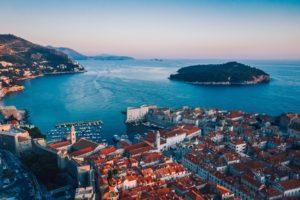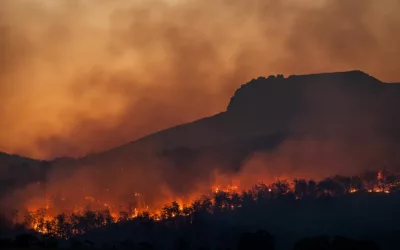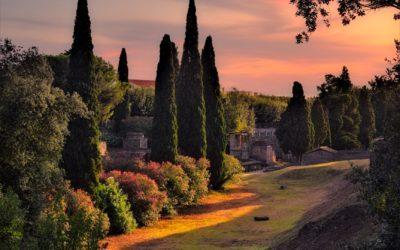Poland conjures up many thoughts. The horrors of WWII. An electrician named Lech Walesa that became the first democratically elected president. Pierogis and Kielbasa. Poland is all of this, but also a lot more.
Throughout the centuries the country of Poland has existed, then didn’t, then reemerged, and ceased to exist a few times.
Sitting on the border between Eastern Europe and Western Europe, Poland has been around for a long time. Dating back to at least 700 B.C.E, Iron age fortifications and artifacts have been found in the area and the Romans knew of the existence of small towns in the area, mostly located along a long trade route stretching from the Baltic to the Mediterranean. At the time, the region was mostly inhabited by a variety of peoples such as slavs, celts, and Germanic tribes.
By 1038 the royal seat was officially established in Krakow and in 1569 the Polish-Lithuanian Commonwealth was established making it the largest country in Europe at the time. It became a beacon for artists and intellectuals all over Europe which is evidenced by the architecture, art, literature, and philosophy that came from the era.
Despite disastrous wars against Russia, Sweden, and then WWI and WWII, Poland has emerged as a hotspot for tourism.
The relatively affordable country to visit offers a wide range of things to do. Old city towns and squares are abundant in the older parts of the country while the countryside and smaller towns offer a more natural and rural setting perfect for people who are looking to hike in the forests or trek through a meadow. Meanwhile, modern cities offer nightlife, delicious food, and the quintessential urban European experience.
In this post we have not explored the other side of Poland. The Poland with 16 UNESCO World Heritage sites, and the biodiversity. That will be in another post, as we have concentrated more on the urban centers.
Warsaw
Warsaw is the capital of the country and a great place to start your journey through the country. With over a million inhabitants, Warsaw is also the largest city in the country. Sitting on the Vistula River, you’ll likely spend most of your time here in the Centrum area which in itself is made up of six other districts from industrial areas to residential neighborhoods.
Explore the Old Town
It wouldn’t be a European vacation without spending a moment or two exploring the old town.
Cobblestone streets, street artists, and street food is what you’ll find mostly but there’s a lot more to it than just some old streets. The area is a UNESCO World Heritage Site and looking around you might notice the buildings, churches, and streets designed in a style reminiscent of something from the medieval era. And while you wouldn’t be entirely wrong about that, the neighborhood was actually built in the 1950s and 60s.
During the Second World War, the city was almost entirely decimated and the buildings flattened. What was left of the original city center was completely destroyed. Elsewhere in Europe that faced similar amounts of destruction was rebuilt in a modern way, but the locals of Warsaw rebuilt the old town, meticulously, brick-by-brick, the exact same way it was in the middle ages.
Check out the Warsaw Uprising Monument
In the summer of 1944, after being occupied and at war for five years, the citizens of Warsaw staged an uprising against their nazi occupiers. The uprising was meant to coincide with the Red Army approaching from the East but they never came, forcing the Polish resistance fighters to fight an uphill battle.
After around 200,000 deaths and 63 days of fighting, the Germans put an end to it and the Red Army never showed up. Stalin personally directed the army not to intervene so the Polish government in exile wouldn’t reclaim its position and the USSR could pursue a communist agenda in the country following the war. With all that in the past, the 33-foot tall monument stands to give proper recognition to those who fought the Nazis and the occupation.
Eat Like the Proletariat
There’s plenty of great food in Warsaw from international delights like a kebab to local delicacies like the essential pierogi.
While there are plenty of traditional food options in Warsaw, there’s one restaurant in town offering food from a bygone era. The Oberża Pod Czerwonym Wieprzem or “The Inn Under the Red Hog” in English looks like a normal Warsaw restaurant serving specialty pork dishes.
Other than the large pig outside, there’s nothing really here to give you the impression there’s something else going on there. But the restaurant has legend and mystery on its side. When you walk inside you’ll be greeted by portraits of the world’s most legendary communist dictators staring down at you.
Colloquially known as the “red-hog” the story goes that Poland’s first communists came here to eat pork, drink, and discuss the revolution. Legend has it that even Lenin was a fan of the place and that he frequented it in the early 1900s. Whether or not the origins are true the place still serves “communist-themed” meals with quirky names such as “Wild Boar a la Tito”, the “Proletarian Cutlet”, and the “President Jimmy Carter Burger”. A burger styled after Carter’s visit to Warsaw in ‘77.
Drink like a Local
Beer and Vodka are the drinks of choice for locals but it’s not always what you drink but where you drink. During the warmer months, drinking outside usually by the river is common especially on the weekends. But if you’re looking to drink like a local, head to Nowy Świat.
A row of well-kept bars usually only known to locals is where you should head to grab a drink or several. Usually populated by locals these speakeasy-esque bars are a great starting point to a night out but show up early because tables fill up fast. It usually attracts a younger crowd and coming it at about 2.50USD for a half-liter of beer, the price can’t be beaten.
Krakow
The city of Krakow is the old royal seat of power in Poland and the former capital when it was part of the Polish-Lithuanian commonwealth. Divided into 18 different districts the city offers a bit of rural and urban so you can immerse yourself in nature during the day and party at night.
Visit a Dragon’s Den
Legends about the origins of the city name of Krakow differ but they all involve dragons. Why not visit a place of cultural importance with a little bit of fairy-tale style legend mixed in. The cave that is part of the Wawel Castle complex is the mythical former home of a dragon.
The story goes that the dragon requested a weekly offering of cattle and if the townspeople failed to deliver, the dragon would burn everyone and everything. One story goes that a local cobbler named Krak came up with a plan to stuff a fake sheep full of sulfur for the dragon to eat.
The dragon ate the sheep and mixed with the fire in its belly, the dragon exploded and the town was saved. Krak then married a princess, became king, built the castle upon the cave, and the town was named in his honor. While the story is just a myth, the cave complex did house a tavern and brothel in the middle ages and the series of limestone rooms make it an interesting tourist attraction. There’s even a bronze dragon sculpture in front that shoots fire.
If you’re looking for more dragon-based esoterica, the nearby Wawel Cathedral has the “dragon’s bones” hanging above the entrance.
Spend some time with Copernicus
Located in what is now known as the Jagiellonian University, the place used to be known as the Collegium Maius. Built in the 15th century, the college is the oldest in the country and over the centuries it was home to many famous luminaries though none of which are as famous as Copernicus himself.
The grounds here are absolutely beautiful with arched walkways, courtyards, and ornate baroque style interiors designed in intricate woodwork. The second floor was reserved for teacher’s quarter’s and subjects at the time were heavily focused on science, especially astronomy. Nicholas Copernicus was a student here and formulated his theory of the Sun being at the center of the universe, not the earth which was pretty controversial at the time and further inspired people like Galileo (who was then convicted of heresy by the church).
The Collegium Maius still houses a collection of tools, astrolabes, telescopes, globes, weights, and more than Copernicus himself used while studying here.
Eat like a Cracovian
Krakow is probably one of the lesser-known foodie cities, especially in Europe but the sheer amount of local specialties give the rest of Europe a run for its money.
If you’re looking to eat on the cheap, you’re in luck because there are a ton of options. Visiting a Bar Mleczny or “milk bar” might be an exercise on how good your Polish is, but you’ll leave feeling full and nourished. Established during the communist-era milk bars (named so because they didn’t serve alcohol) they were meant to serve food to workers.
Poland might have gotten rid of communism but they kept the milk bars and now they typically serve basic fare for a low price. Expect to find everyone from students to the homeless to men in business suits at one. One of the most iconic Krakow dishes is the zapiekanka, which is an open-faced baguette baked with toppings like cheese, mushrooms, and some sort of sauce – almost resembling a pizza.
Finally, for Cracovian in the know, nothing satisfies after a night out like the kielbasa van. Open every night from 8 pm to 3 am, two gruff men set up a grill outside their van in front of the market in the old town. They serve kielbasa on a roll with a squirt of mustard. That’s it. But for 2$ USD it’s the perfect drunk snack.
Pomerania
Known as the summer capital of Poland, Pomerania is where you can go to relax, enjoy the spa, have a day at the beach, and explore little towns reminiscent of old German fairy tales.
Gdansk
Also known as Danzig, the medieval city on the coast is one of the more bustling cities in the region. The port city was a stronghold for the Teutonic Knights but now it’s a thriving city that straddles the line between an old European city and modern cosmopolitan urbanity.
Almost all of Gdansk’s coast is sandy, making it a summer hot spot for Polish beachgoers. While the water is pretty cold the beaches are always filled with people on hot summer days. Despite what some recent political moments might have you believe, Gdansk is a popular LGBT destination with pride events, clubs, and bars dedicated to serving the city’s queer community.
See the start of the Second World War
On September 1st, 1939 at around 4:48 am, the first shots of WWII were fired at Westerplatte. A barrage from a German naval ship fired artillery into the Polish naval depot here. Despite the naval depot being loosely guarded, around 210 Polish servicemen defended the bay for a week against over 3,000 Germans. The event became a rallying point for the Polish resistance with historians equating the heroism to that of Thermopylae. Today the ruins stand as an outdoor museum with monuments and exhibits dedicated to the prelude, duration, and aftermath of the battle.
Our Final Word
Poland offers it all. Vibrant cities, spas and beaches, as well as mountains and forests. Warsaw is a fantastic city, but after exploring head out into the countryside. See and experience how real Poles live, work and party. We have always thought Poland is an unsung hero of tourism, offering every kind of holiday one could want but on few people’s radar. We have enjoyed traveling and exploring Poland, and will be going back. Hope to see you there!
1 Comment
Submit a Comment
Related Posts
Why Climate Change Matters: Understanding the Threat to Our Planet
Climate change is not just an environmental issue; it is a threat to our very existence. Rising temperatures, extreme weather events, and melting ice caps are just the beginning. The consequences of inaction are dire, affecting ecosystems, economies, and human lives. It is imperative that we understand the urgency and take immediate action to combat this global crisis.
From the Amazon to the Arctic: A Global Journey into Indigenous Cultures
“From the Amazon to the Arctic takes readers on a captivating global journey, delving into the rich tapestry of indigenous cultures. We offer a unique perspective, shedding light on the wisdom, traditions, and resilience of these remarkable communities. Prepare to be inspired and enlightened by their extraordinary way of life.”
Don’t Be That Tourist: 5 Things to Skip When Exploring Italy
When exploring Italy, it’s important to avoid certain tourist traps that can hinder your experience. Skip the long lines at the Colosseum and opt for lesser-known ancient ruins. Avoid overpriced restaurants near major attractions and discover authentic local eateries. Don’t waste time on crowded beaches, explore hidden gems instead. Embrace the true essence of Italy by avoiding these common tourist mistakes.











Awesome information guys. I like this article. Thanks for sharing . Have a great time.